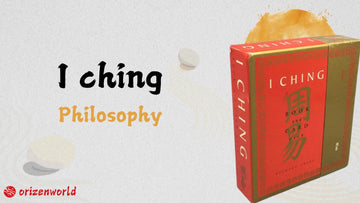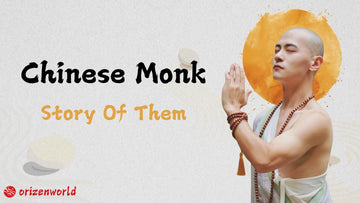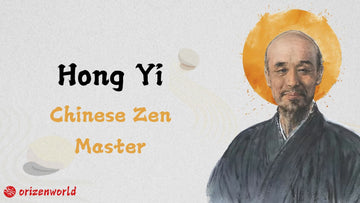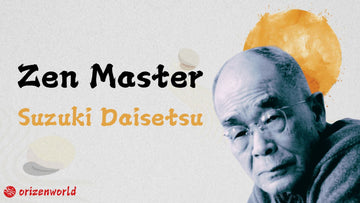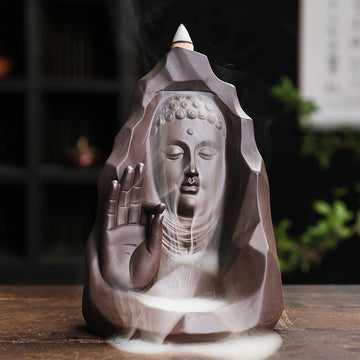When exploring Feng Shui or the concept of Yin and Yang, you’re likely to come across the I Ching (Book of Changes). This ancient Chinese text has fascinated readers for centuries, yet even many Chinese people struggle to fully grasp its profound meanings. Its mysterious nature often intrigues those passionate about Chinese culture.
If you’re researching the I Ching as a non-Chinese individual, it’s a testament to your deep interest in understanding China’s rich cultural and philosophical heritage.
In this article, I’ll guide you through the enigmatic world of the I Ching, sharing its origins, principles, and relevance today. Let’s uncover the wisdom behind this remarkable book and explore how it connects to universal truths.
The I Ching (Book of Changes) is an ancient Chinese classic, revered as the "source of the great Dao" and the "foremost among the classics." It encompasses a vast array of subjects, including life, politics, economics, literature, art, and law, making it a cornerstone of Chinese civilization. Regarded as the origin of Chinese culture, the I Ching serves as the foundation of Confucianism, Daoism, and Buddhism, influencing all Chinese philosophical thought. It is often considered the wellspring from which all other classical Chinese teachings flow.
The I Ching integrates philosophy, divination, and ethics. Its central idea revolves around the balance of Yin and Yang and the principle of change, emphasizing that the development of things arises from the interaction of opposing forces. This philosophical underpinning has made the I Ching a vital source of ancient Chinese thought.
The creation of the I Ching dates back over 3,000 years to the Western Zhou dynasty. Legend credits Fu Xi with devising the original Eight Trigrams, which were later expanded into 64 hexagrams by King Wen of Zhou, who also composed their accompanying texts. Confucius and his disciples further annotated the I Ching, shaping its current structure. Over centuries, the I Ching evolved through additional interpretations, covering astronomy, geography, society, and ethics, solidifying its place as a pillar of Chinese intellectual history.

Fuxi, a legendary sage in ancient China, is considered one of the founders of the I Ching, credited with creating the Eight Trigrams.
The I Ching (Book of Changes) is deeply rooted in the philosophy of Yin and Yang, which represents the interplay of opposing forces that drive the universe. Yin symbolizes qualities such as darkness, femininity, and passivity, while Yang embodies brightness, masculinity, and activity. Together, they create balance and harmony, forming the foundation of all things. The I Ching explores how these opposing forces interact and transform, offering insights into the cycles of nature, human behavior, and the cosmos.
At its core, the I Ching emphasizes three key principles: change (变易), immutability (不易), and simplicity (简易).
Change (变易): The I Ching asserts that the universe is in a constant state of flux. Nothing is static; everything evolves over time. This principle highlights the dynamic nature of life and the importance of adapting to change.
Immutability (不易): Amid change, there are underlying, unchanging patterns and laws. These universal principles, such as balance and harmony, provide a framework for understanding the world’s transformations.
Simplicity (简易): Despite its profound insights, the I Ching conveys its ideas through simple symbols, such as the hexagrams, making complex truths accessible.
The philosophy of the I Ching emphasizes harmony in the universe and understanding the rhythms of change. It teaches that by recognizing patterns and aligning with natural cycles, individuals can navigate life’s challenges with wisdom and clarity. This balance between change and constancy is the essence of the I Ching's timeless wisdom.
The I Ching (Book of Changes) is structured into two main parts: the text and the commentary.
The text includes 64 hexagrams and their corresponding 384 lines. Each hexagram, formed by combining two trigrams (three-line symbols), represents a specific natural or social phenomenon. The hexagrams consist of six lines that can either be broken (representing Yin) or unbroken (representing Yang). Each hexagram has a unique name and is accompanied by a hexagram statement (卦辞) that describes its overall meaning, as well as individual line statements (爻辞) that provide insights based on the specific position of each line. These interpretations reflect the dynamic interactions of Yin and Yang, offering guidance for understanding change and decision-making.
The trigrams are the building blocks of the hexagrams. There are eight trigrams, each representing fundamental elements of nature, such as Heaven, Earth, Water, and Fire. When combined in pairs, these trigrams form the 64 hexagrams, symbolizing the endless variations of change and harmony in the universe.
The commentary, also known as the Ten Wings (十翼), was attributed to Confucius and his disciples. It expands on the text, providing philosophical explanations and practical applications. Works such as the Tuan Commentary (彖传) and the Image Commentary (象传) delve into the principles of the I Ching, making it both a profound philosophical text and a tool for divination.
The divination process of the I Ching is an intricate yet fascinating method for seeking guidance based on universal principles of change and balance. It is grounded in ancient techniques and emphasizes sincerity, focus, and a quiet environment during the consultation.

The Six-Yao Coin Method is a divination tool in the I Ching, using six coin tosses to form hexagrams that reveal guidance and insight.
1. Methods of Consulting the I Ching
One of the oldest and most traditional methods is the yarrow stalk method (揲蓍法). This process involves using 50 yarrow stalks, reducing them through multiple steps to determine numerical values that form the hexagram. The process, though complex, reflects the precision and respect ancient diviners had for the practice.
A more modern and accessible method is the coin method, which uses three coins tossed six times. The combination of heads (Yang) and tails (Yin) determines each line of the hexagram, with results yielding six types: changing or unchanging Yin or Yang lines.
Other methods include the Plum Blossom Numerology (梅花易数), which uses numbers, objects, or events encountered randomly in daily life to generate a hexagram. This method emphasizes intuition and synchronicity.
2. Interpreting Hexagrams and Changing Lines
Each hexagram consists of six lines, representing the interaction of Yin and Yang. The hexagram’s name, structure, and associated text provide insight into the situation. Changing lines, marked by "old Yin" or "old Yang," signify transitions and guide interpretation by highlighting areas of transformation.
Through these methods, the I Ching reveals dynamic insights into personal, social, or cosmic events, offering profound wisdom for navigating life’s complexities.
The I Ching (Book of Changes) has extensive applications across various domains, offering profound insights and practical value. Its philosophical principles serve as a foundation for decision-making, cultural aesthetics, and even advancements in science and technology.
1. Personal Guidance and Decision-Making
In modern times, the I Ching is often used as a tool for self-reflection and guidance, akin to a Chinese version of tarot cards. Through its divination process, individuals consult the I Ching to navigate uncertain situations, gain clarity, and find direction.

Many Chinese people, especially those interested in traditional culture, turn to the I Ching to seek answers and align their decisions with natural principles.
2. Influence on Chinese Medicine, Feng Shui, and Martial Arts
The I Ching’s concepts of Yin and Yang, as well as its emphasis on balance and harmony, have deeply influenced traditional Chinese medicine, Feng Shui, and martial arts. In Chinese medicine, these principles guide the understanding of health, disease, and treatment, emphasizing the balance of opposing forces within the body. In Feng Shui, the I Ching’s hexagrams and trigrams provide a framework for creating harmonious living spaces. Martial arts also draw from the I Ching’s ideas of adaptability and flow, integrating its principles into movement and strategy.
3. Broader Cultural Impact
The I Ching has influenced Chinese aesthetics, promoting abstraction and symbolism in art forms like painting and calligraphy. Additionally, its focus on practical problem-solving has shaped the utilitarian approach of Chinese science and technology, emphasizing functionality and real-world applications. These diverse influences make the I Ching a cornerstone of Chinese culture.
The I Ching has made a profound impact on Western thinkers and modern philosophy, especially since the early 20th century when it began to make its way into the Western world. Viewed as a unique and novel system of thought, it introduced Western philosophers, psychologists, and scholars to its deep philosophical concepts, including Yin-Yang philosophy, the Five Elements theory, and ethical principles related to governance and harmony. The I Ching’s ideas of balance, change, and the interconnectedness of opposites have significantly influenced Western thought, contributing to various fields such as psychology, management, and even modern philosophy.
The influence of the I Ching can also be seen in scientific discoveries. Notably, Werner Heisenberg's Uncertainty Principle and Niels Bohr's Complementarity Principle were inspired by the I Ching's ideas of duality and change. Similarly, Chinese physicists Yang Chen-Ning and Lee Tsung-Dao credited the I Ching with inspiring their discovery of the Law of Parity Violation, for which they won the Nobel Prize.

Bohr, in particular, honored the I Ching by incorporating its Taiji symbol into the insignia of his Nobel Prize award.
In business, the founders of major companies like Toyota and Samsung have also drawn inspiration from the I Ching, particularly in applying its concepts of balance and adaptability to their management strategies.
The I Ching’s far-reaching influence extends beyond philosophy, impacting fields such as biology, sociology, astronomy, and modern science. Its contribution to world culture remains invaluable and continues to shape various domains globally.
The I Ching remains a timeless source of wisdom for modern individuals, offering profound insights into self-awareness and understanding one’s environment, thereby guiding actions. In contrast to Western psychology, which often focuses on analyzing the unconscious mind—such as Freud’s interpretation of dreams—the I Ching provides a holistic approach to understanding both inner and outer realities.
Swiss psychologist Carl Jung, inspired by the I Ching, introduced the concept of synchronicity, suggesting that psychological discomfort may stem from events happening in the present moment, much like a form of "telepathy." This idea aligns with many people's experiences, such as feeling uneasy without understanding why, only to later discover a connection to an event happening elsewhere.
The I Ching teaches a non-linear, holistic thinking model, which reflects a simultaneous awareness of time, space, and events. This approach encourages individuals to recognize patterns that are unfolding in real-time, fostering a more comprehensive view of life's complexities. The concept of "Heaven, Earth, and Man" from the I Ching emphasizes balance and interconnectedness, offering a spiritual and practical framework for modern challenges.
By embracing the I Ching’s principles, individuals can better navigate life’s constant changes. It teaches that everything is in a state of flux—darkness follows light, summer follows winter—and reminds us that challenges will pass while periods of ease may not last. Its guidance encourages a balanced, forward-thinking perspective, making it increasingly relevant in today’s fast-paced world.

